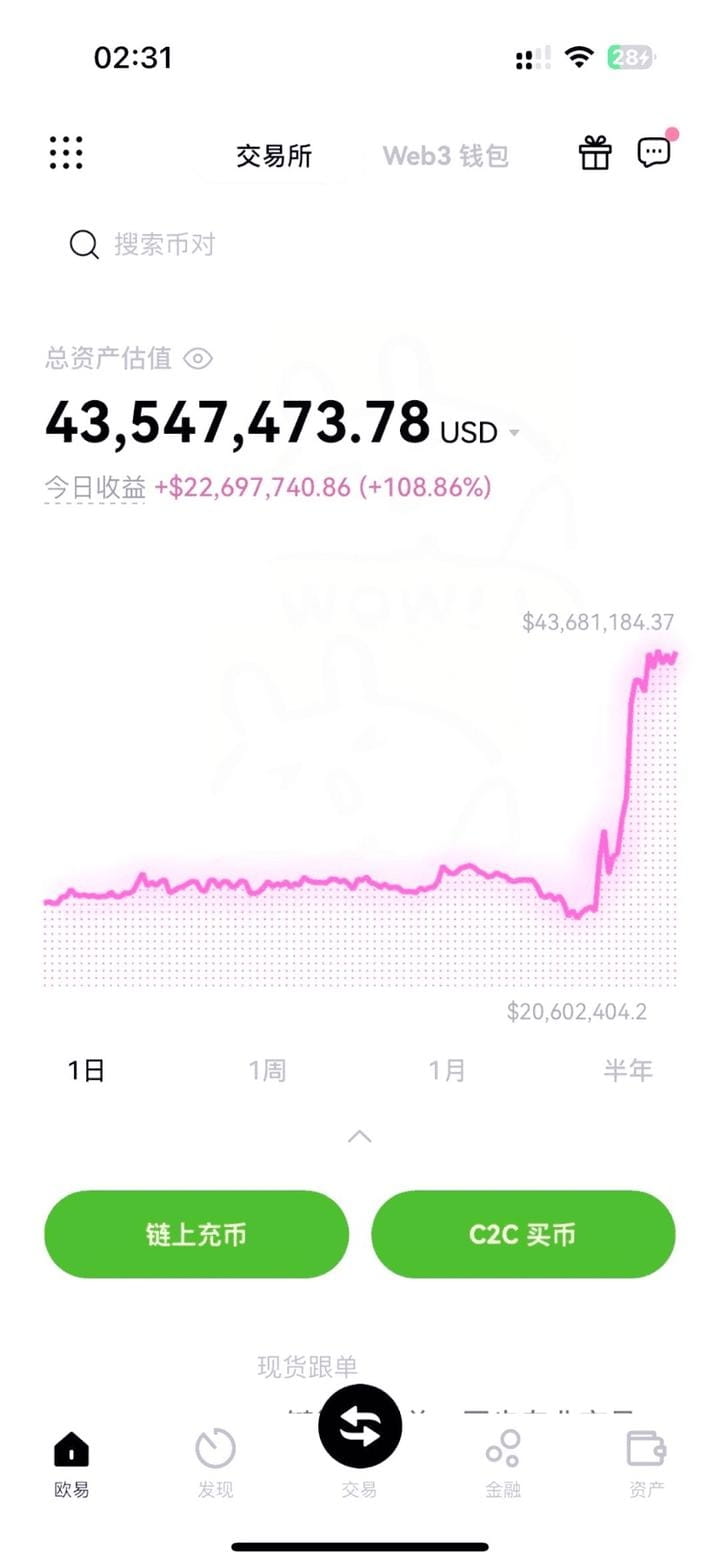 Guide to violent rolling positions from 500U to 50,000U: 3-step breakdown of 'small capital leverage fission technique' (with position management formula)
Guide to violent rolling positions from 500U to 50,000U: 3-step breakdown of 'small capital leverage fission technique' (with position management formula)
I have practiced this method in trading over ten thousand times, with a win rate of up to 98%! Last month in March, I also earned 120,000U in a month!
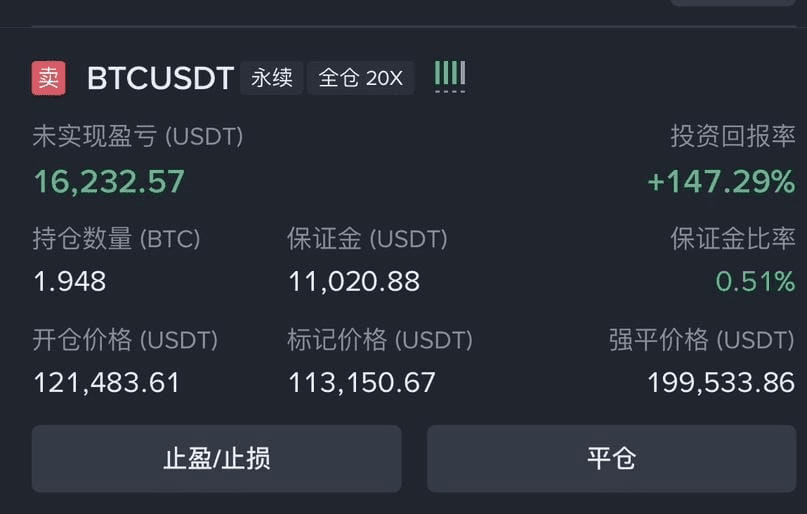
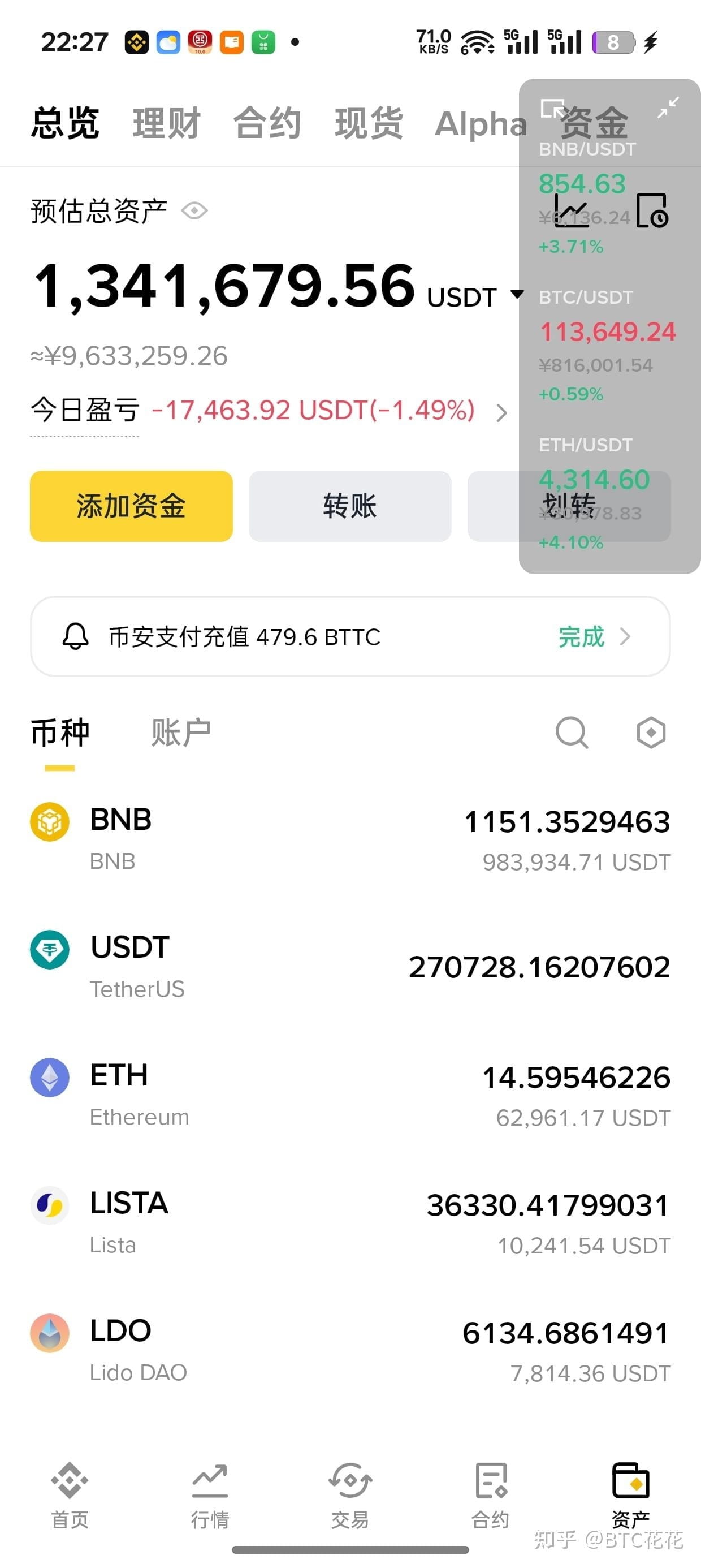 1. Startup period (500U→2000U): Use '10% position + 10x leverage' to bite into the new coin's first explosion
1. Startup period (500U→2000U): Use '10% position + 10x leverage' to bite into the new coin's first explosion
Core logic: Only take 50U (10% of capital) for trial and error each time, locking the single loss within 5U (stop loss 10%)
50U×10x leverage=500U position, target 20% increase (earn 100U)
In August 2025, HTX will launch BOT, 50U leverage 10 times, buy the dip at 15%, rise 30% in 3 hours, earn 150U, roll over to 650U, repeat 8 times to reach 2100U
Avoid emotional trading.
2. During the explosive period (2000U → 10,000U): Switch to '20% position + 5 times leverage' to chase whale hotspots.
In September 2025, DeFi2.0 leader FLX launched with 400U capital and 5 times leverage (2000U position), stop-loss at 5% (losing 20U), target 15% (earning 60U), 40% increase in 3 days, directly earning 1600U, rolling positions to 3700U.
After making a 10% profit, immediately move the stop-loss to the cost line to ensure no loss of principal.
3. Ultimate phase (10,000U → 50,000U): 'Hedging + ladder-style rolling positions' to guard against black swans.
After each profit, withdraw 30% and keep BTC spot, and reinvest 70% using the 'position halving method.'
Operation steps:
1. After 10,000U arrives, buy 3000U of BTC (anti-fall anchor).
2. Split 7000U into 7 orders, each order 1000U for ETH perpetual (2 times leverage = 2000U position).
3. Each order has a stop-loss of 3% (losing 30U), take-profit of 5% (earning 50U). If 4 out of 7 orders are profitable, you can break through 20,000U.
Critical detail: When total assets drop more than 15% (for example, from 30,000 to 25,500), immediately close 60%, triggering the '20% profit protection line' before restarting.
Trap 1: Going all-in on new coins (someone once went all-in 300U on MEME coin and was liquidated for 200U in one hour).
Trap 2: (Not setting a stop-loss when down 15%, instead increasing positions, ultimately losing all capital).
Trap 3: Running away with small profits (withdrawing 1200U after earning 1500U from 1000U, missing a subsequent 10x explosion).
Three iron rules:
1. Use 500U as if it's 50U: Do not open positions exceeding 10% of principal at one time and keep 'zero-risk' below 0.5%.
2. Only act when BTC stabilizes at 68,000U: When the market is stable, the probability of breakout for hot coins increases threefold.
3. Profit = position × odds × discipline: The first two determine the upper limit, and the last one determines whether you can survive to '50,000U.'
In the cryptocurrency world, 500U is not principal; it is the entry ticket to 'leveraging with discipline.'

Super cryptocurrency trading method: Rolling positions for 3 months can yield 300 times returns, easily earning 30 million.
Since the Federal Reserve cut interest rates, many newcomers eager to enter the cryptocurrency world have flooded in. The cryptocurrency market is a place where survival of the fittest prevails. The entry threshold is low; anyone can enter the cryptocurrency market, but not everyone can make money in it. If you plan to enter the cryptocurrency market, please remember that it is not a place for overnight riches, but a field that requires long-term accumulation and continuous learning.
Many people come to the cryptocurrency market harboring dreams of getting rich overnight, fantasizing about turning a few thousand into 1 million in capital. Of course, some have succeeded, but in most cases, it can only be achieved through 'rolling positions.' Although rolling positions is theoretically feasible, it is not an easy path.
Rolling positions is a strategy suitable for use only when significant opportunities arise; frequent operations are not needed. Grasping just a few such opportunities in a lifetime can accumulate wealth from zero to tens of millions. And having tens of millions in assets is enough to elevate an ordinary person into the ranks of the wealthy, achieving financial freedom.
When you truly want to make money, do not think about how much you want to earn or how to earn that much. Do not think about those targets of tens of millions or even hundreds of millions. Instead, start from your actual situation and devote more time to accumulate. Mere boasting will not bring us substantial changes. The key to trading lies in recognizing the size of opportunities, and one cannot always trade with light positions or heavy positions. During normal times, small amounts of capital can be used for practice, and when a real big opportunity arises, go all in. When you truly grow your initial capital from tens of thousands to 1 million, you will have unknowingly learned some principles and logic for making big money. At that point, your mindset will become more stable, and future operations will resemble previous successful repetitions.
If you want to learn about rolling positions, or how to grow from a few thousand to several million, then you need to pay close attention to the following content.
1. Judging the timing of rolling positions.
Rolling positions cannot be done just because one wants to; it requires certain backgrounds and conditions to increase the odds, with the following four situations being most suitable for rolling positions:
(1) Breakthrough after long-term consolidation: When the market has been in a consolidation phase for an extended period and volatility has dropped to a new low, once the market chooses a breakout direction, consider using rolling positions.
(2) Buying the dip in a bull market: In a bull market, if the market suddenly experiences a significant drop after a substantial rise, one can consider using rolling positions to buy the dip.
(3) Breakthrough at the weekly level: When the market breaks through significant resistance or support at the weekly level, consider rolling over to seize the breakthrough opportunity.
(4) Market sentiment and news events: When market sentiment is generally optimistic or pessimistic, and there are significant news events or policy changes that may affect the market, consider using rolling positions.
Only under the four scenarios mentioned above will the odds of rolling over be relatively high; at other times, one should operate cautiously or give up the opportunity. However, even when the market appears suitable for rolling over, it is necessary to strictly control risks, set stop-loss points, and prevent potential losses.
2. Technical Analysis
After confirming that the market meets the conditions for rolling positions, the next step is to conduct technical analysis. First, trend confirmation should be performed using technical indicators to determine the direction, such as moving averages, MACD, RSI, etc. If possible, confirm the trend direction using multiple indicators together; after all, it is always better to prepare more. Secondly, identify key support and resistance levels to assess the effectiveness of breakouts. Finally, use divergence signals to capture reversal opportunities. (Divergence signals: When a cryptocurrency price reaches a new high, but MACD does not, forming a top divergence, indicating that the price will rebound, one can reduce positions or short; similarly, when the price reaches a new low, but MACD does not, forming a bottom divergence, indicating that the price will rebound, one can increase positions or go long.)

3. Position management.
Once this step is done, it’s time for position management. Reasonable position management includes three key steps: determining the initial position, setting rules for increasing positions, and formulating reduction strategies. I will provide an example to help everyone understand these three specific operation steps:
Initial position: If my total capital is 1 million, then the initial position should not exceed 10%, which is 100,000.
Position increase rules: Be sure to wait until the price breaks through significant resistance levels before increasing positions, and each increase should not exceed 50% of the original position, meaning at most an additional 50,000.
Reduction strategy: Gradually reduce positions when the price reaches the expected profit target. Don't hesitate when it's time to let go. Each reduction should not exceed 30% of the existing position to gradually lock in profits.
As ordinary individuals, we can invest more when opportunities are abundant and less when opportunities are scarce. If luck is on our side, we can earn millions; if luck is not on our side, we can only accept it. However, I still want to remind you that when you earn money, you should withdraw the principal you invested and use the profits for trading. It's okay not to make money, but you must not lose money.
4. Adjusting positions.
After completing position management, the most crucial step is how to achieve rolling positions through position adjustments.
The operation steps are undoubtedly just a few steps:
1. Choose the right timing: Enter the market when it meets the conditions for rolling positions.
2. Opening a position: Open a position based on technical analysis signals, selecting appropriate entry points.
3. Increase position: Gradually increase positions when the market continues to move in a favorable direction.
4. Reduction: Gradually reduce positions when reaching the predetermined profit target or when the market shows a reverse signal.
5. Closing positions: When reaching the take-profit target or when the market shows a clear reversal signal, completely close the positions.
Here, I will share my specific operations for rolling positions:
(1) Adding positions during floating profits: When the invested asset appreciates, consider adding positions for purchase, but the prerequisite is to ensure that the holding cost has been lowered, thus reducing the risk of losses. This does not mean you should add positions every time you make a profit, but rather at appropriate times, such as during a converging breakout in a trend, adding positions quickly after the breakout and reducing them again. You can also add positions during trend corrections.
(2) Base position + T trading: Divide assets into two parts, keeping one part unchanged as a base position, while using the other part for buying and selling during market price fluctuations to lower costs and increase profits. The ratio can refer to the following three types:
1. Half position rolling: Half of the funds are used for long-term holding, while the other half is used for buying and selling during price fluctuations.
2. Thirty percent base position: Hold 30% of the funds long-term, while the remaining 70% is used for buying and selling during price fluctuations.
3. Seventy percent base position: Hold 70% of the funds long-term, while the remaining 30% is used for buying and selling during price fluctuations.
The purpose of doing this is to maintain a certain position while leveraging short-term market fluctuations to optimize the cost of holding positions.
5. Risk Management
Risk management mainly consists of two parts: controlling the total position and allocating funds. It is essential to ensure that the overall position does not exceed the bearable risk threshold, and funds should be allocated reasonably without putting all funds into a single operation. Additionally, real-time monitoring is necessary, closely observing market dynamics and changes in technical indicators, flexibly adjusting according to market changes, and promptly stopping losses or adjusting positions when necessary.
Many people feel both fear and excitement when it comes to rolling positions. They want to try but are afraid of the risks. In fact, the strategy of rolling positions itself isn't inherently risky; the real risk comes from leverage. However, if used reasonably, the risk won't be too high.
For example, if I have a principal of 10,000 and I open a position when a coin is at 1000, I use 10 times leverage and only use 10% of the total funds (i.e., 1000) as margin. In reality, this is equivalent to 1 times leverage. Set a stop-loss at 2%. If the stop-loss is triggered, I will only lose 2% of that 1000, which is 200. Even if the liquidation condition is ultimately triggered, you will only lose that 1000, not all funds. Those who get liquidated often do so because they used higher leverage or larger positions, leading to liquidation with even slight market fluctuations. However, by following this method, even in an unfavorable market, your losses will still be limited. So, 20 times can roll, 30 times can roll, and 3 times can also roll; if necessary, even a 0.5 times can work. Any leverage can work; the key is to use it reasonably and control positions properly.
This is basically the process of using rolling positions. Friends who want to learn can watch it several times and contemplate. Of course, there may be different opinions, but I only share experiences and do not persuade others.
So how can small funds grow?
This is where I must mention the effect of compound interest. Imagine if you have a coin that doubles in value every day; after a month, its value would become astonishingly high. The first day it doubles, the second day it doubles again, and so on, resulting in astronomical figures. This is the power of compound interest. Although starting with small funds, through long-term continuous doubling, it can also grow to tens of millions.
For friends looking to enter the market with small funds, I recommend focusing on larger goals. Many believe that small funds should frequently engage in short-term trading for quick value appreciation, but it is actually more suitable to pursue medium to long-term strategies. Rather than earning small profits daily, one should focus on achieving several times growth with each trade, aiming for exponential growth.
Regarding positions, first understand how to diversify risks, and do not concentrate all funds in a single trade. You can divide your funds into three to four parts, using only one part for each trade. If you have 40,000, divide it into four parts and use 10,000 for trading. Secondly, use leverage moderately. Personally, I suggest not to use more than 10 times for major coins and not more than 4 times for altcoins. Furthermore, adjust dynamically; if you incur losses, supplement with an equivalent amount of funds from external sources, and if you make profits, withdraw them appropriately. Whatever happens, do not let yourself incur losses. Finally, increase positions, but this is premised on the condition that you are already making profits. When your capital grows to a certain extent, you can gradually increase the amount for each trade, but do not increase too much at once; transition gradually.
I believe that through reasonable position management and steady trading strategies, small funds can gradually achieve significant appreciation. The key lies in patiently waiting for the right opportunities and focusing on the larger goals of each trade, rather than small daily profits. Of course, I have also faced liquidation, but at that time, I still had spot earnings to cover my losses. I don't believe that you haven't made a single cent from your spot holdings. My futures only account for 2% of my total funds, so no matter how much I lose, I won’t lose everything. The extent of losses has always been within my controllable range. Finally, I hope that each of us can build up slowly and earn several million.
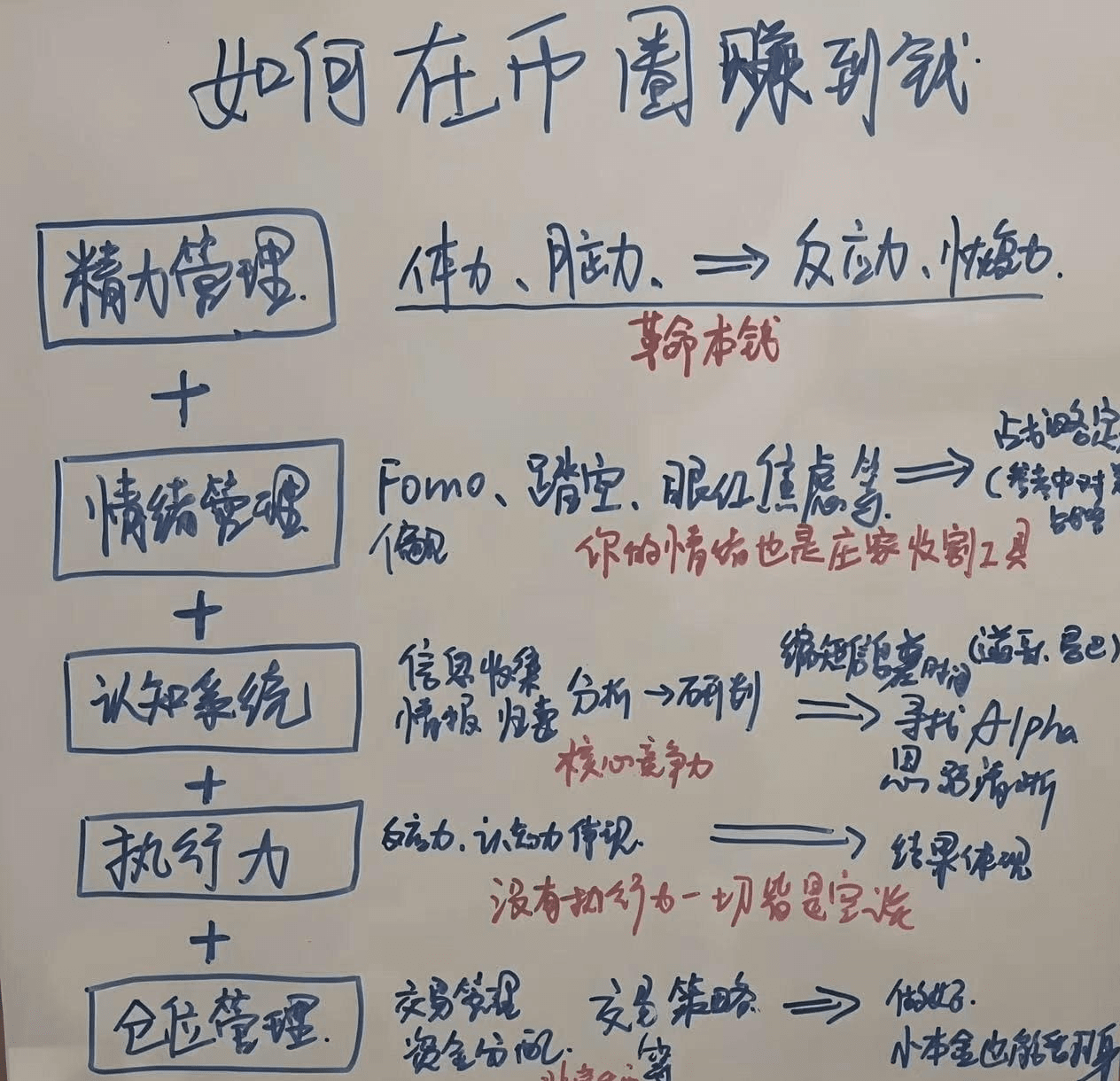
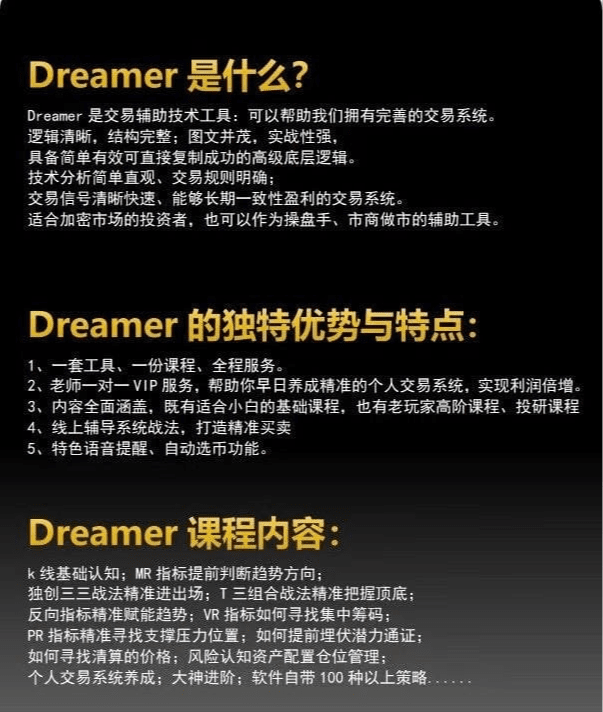 1. Moving Averages
1. Moving Averages
Moving averages are also known as moving average lines, abbreviated as (MA). MA is an important indicator that is simple and clear in use, clearly displaying the market's operating trajectory, helping us match and integrate various candlestick patterns and indicators to find the best trend changes in the market.
2. What is a moving average?
The principle of the moving average (MA indicator) is simple: it plots the average closing prices over a certain period on the candlestick chart and connects these average points to form a line, creating the moving average. The moving average can also serve as a trendline indicator. When the candlestick operates above the moving average, it indicates strength, with a higher probability of continuing to rise. When the candlestick operates below the moving average, it indicates weakness, with a higher probability of continuing to fall.
3. Set MA indicators:
Common settings are: 5, 10, 30, 60, 120. If you set the 5-day moving average, just fill in the number 5. The moving average was originally set based on the trading dates of the stock market, while the cryptocurrency market operates 24/7 without interruption, so corresponding indicators can be adjusted based on personal habits, such as 7 days, 14 days, 30 days, 90 days, 180 days, etc.
4. Different periods and applications of moving averages:
According to the duration, moving averages can be divided into: short-term moving averages, medium-term moving averages, and long-term moving averages.
Use 5-day, 10-day, and 5-week moving averages for short-term fluctuations.
Use the 30-day and 60-day moving averages for medium-term trends.
Use the 120-day or 360-day moving average level for long-term trends.
In financial markets, indicators such as the 20, 30, 60, 120, and 200 moving averages usually play a decisive role in medium to long-term price trends. Among them, the 30-day and 60-day moving averages serve as the lifeline for the medium-term; their direction indicates whether the price trend is bullish, bearish, or consolidating. The 120-day and 200-day moving averages serve as the lifeline for bull and bear markets.
For example, with the 5-day moving average: Typically, when the price deviates significantly from the 5-day moving average, it will correct (or retrace). The 5-day moving average reacts relatively quickly as a short-term moving average. The 10-day moving average serves a similar purpose.
As shown in the figure, to make it easier for everyone to see, only the 5-day moving average is set. In the figure, you can see all the price candlestick charts, either at the closing position or the opening position, running closely along the moving average. The shorter the moving average period, the closer it aligns with the candlestick.
5. Inclination direction and angle of moving averages:
When moving averages tilt upwards, it indicates a rising market. When tilted downwards, it indicates a declining market. Moving averages that are horizontal represent consolidation with small fluctuations.
An upward trend in moving averages is ideal; a clear downward trend should not be selected for entry.
If the upward angle of the moving average is too steep, the duration of the trend will be short, and the price fluctuations will be large.
The greater the angle of the moving average pointing downward, the larger the decline and the greater the price fluctuations.
A 45-degree upward angle is the perfect angle for steady growth.
6. Combinations of multiple moving averages: Divided into: convergence and divergence.
When there is a clear upward or downward trend, the moving averages of various periods should generally be arranged in order, indicating divergence. An upward order indicates bullish arrangement, while a downward order indicates bearish arrangement.
When the moving average shifts from divergence to convergence, it indicates that the strength of the market's rise or fall is weakening. The short-term moving averages will fluctuate around the long-term moving average. The longer the convergence lasts, the greater the potential for a breakout. This can be understood as a longer period of sideways consolidation leading to a larger price increase. During this phase, it is advisable to adopt a wait-and-see approach or engage in short-term trading.
7. Golden Cross and Dead Cross of Moving Averages:
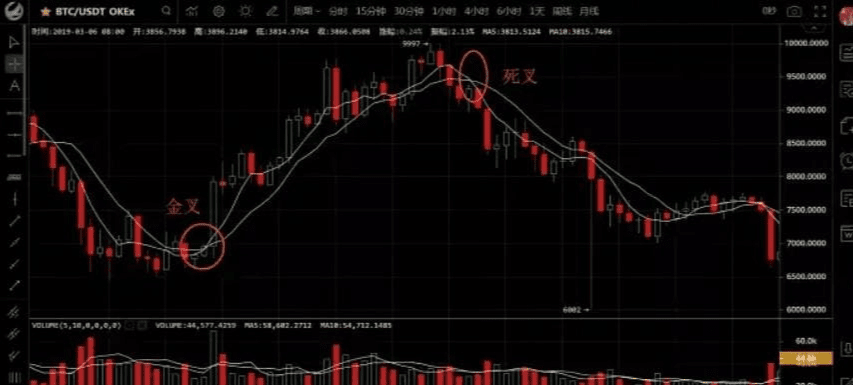 The traditional short-term moving average golden cross refers to the short-term moving average crossing above the long-term moving average, such as the 5-day moving average crossing above the 10-day moving average. If all moving averages are diverging upwards and the price consistently maintains above the 5-day and 10-day moving averages, it indicates that the price is rising. When this situation arises with increased volume, the probability of a bullish outlook is quite high.
The traditional short-term moving average golden cross refers to the short-term moving average crossing above the long-term moving average, such as the 5-day moving average crossing above the 10-day moving average. If all moving averages are diverging upwards and the price consistently maintains above the 5-day and 10-day moving averages, it indicates that the price is rising. When this situation arises with increased volume, the probability of a bullish outlook is quite high.
When the short-term moving average crosses below the medium to long-term moving average, it is called a death cross, indicating that the price will fall.
Note: Not all golden crosses and death crosses are buy and sell points. Some may be market makers shaking the market or unloading positions.
8. In actual operations:
Judgment criteria: Is the candlestick running above or below the moving average? The proximity of the candlestick to the moving average? The shape of the moving average itself: Is it rising, horizontal, or declining? The angle of inclination of the moving average, etc.
Example: If the candlestick is above various moving averages and the moving averages are sloping upwards, then the market trend is upward.
No indicator is omnipotent, and the moving average is no exception. Not every market condition can refer to the moving average; for example, during market fluctuations, moving averages will form a sticky state without a clear direction. In such cases, the moving averages are not reliable.
Since moving averages are calculated based on the average price, there is a slight lag. The longer the period, the more pronounced the lag, but the stability is stronger. Therefore, choose appropriate moving averages based on your trading habits. Commonly used are the 5-day and 10-day moving averages.
The regularity of moving averages is strong. If the recent prices are running upwards along the moving average's trajectory, once a decline occurs and breaks below the moving average, one must be alert.
Everyone can look at the moving averages of various levels in turn. Once you thoroughly understand a particular moving average, you can add other auxiliary judgment moving averages. Practice more and apply them reasonably.
Treat cryptocurrency trading as a job; go to work and off work on time every day.
In the early years of trading cryptocurrencies, like many others, I stayed up late every day, watching the market and chasing trends, losing sleep over losses. Later, I gritted my teeth and persisted with just a simple method, surprisingly managing to survive and even starting to make steady profits.
Looking back now, this method, though simple, is effective: 'If I don't see familiar signals, I absolutely won't act!'
Better to miss the market than to place random orders.
Based on this iron rule, I can now stabilize my annual return rate above 50%, and finally, I no longer have to rely on luck to survive.
Here are some life-saving tips for beginners, all based on my actual trading experiences:
1. Trade after 9 PM.
During the day, the news is too chaotic, with various false positives and negatives flying around, causing the market to fluctuate like crazy, making it easy to be trapped.
I usually wait until after 9 PM to operate, as the news is generally more stable then, and the candlesticks are cleaner, with clearer direction.
2. Immediately secure profits after making money.
Don't always think about doubling! For example, if you make 1000U today, I suggest that you immediately withdraw 300U to your bank card and continue trading with the rest.
I've seen too many people who think, 'I made three times and want to make five times,' only to lose everything in a single pullback.
3. Look at indicators, not feelings.
Don't make trades based on feelings; that's just blind gambling.
Install TradingView on your phone and check these indicators before making trades:
MACD: Are there any golden crosses or death crosses?
RSI: Are there any overbought or oversold conditions?
Bollinger Bands: Are there any contractions or breakouts?
At least two of the three indicators must give consistent signals before considering entering the market.
4. Stop-loss must be flexible.
When you have time to monitor the market, after making profits, manually move the stop-loss price upwards. For example, if the purchase price is 1000 and it rises to 1100, raise the stop-loss to 1050 to secure profits.
However, if you need to go out and can't monitor the market, be sure to set a hard stop-loss at 3% to prevent sudden market drops.
5. Must withdraw funds weekly.
Non-withdrawn money is just a numbers game!
Every Friday without fail, I transfer 30% of my profits to my bank card, and continue rolling the rest. Over time, this way, my account will keep growing.
6. There are tricks to reading candlesticks.
For short-term trading, look at the 1-hour chart: If the price shows two consecutive bullish candles, consider going long.
If the market is stagnant, switch to the 4-hour chart to find support lines: consider entering when it approaches the support level.
7. Be sure not to step into these traps!
Leverage should not exceed 10 times; beginners should keep it within 5 times.
Avoid dogecoin, shitcoins, and other altcoins; they can easily lead to losses.
A maximum of 3 trades per day; too many trades can easily lead to losing control.
Absolutely do not borrow money to trade cryptocurrencies!!
The last sentence I want to share with you:
Trading cryptocurrencies is not gambling; treat it as a job. Work regular hours, turn off your computer on time, eat when it's time to eat, and sleep when it's time to sleep. You will find that money will actually come in faster.
I am Fan Fan, focusing on the cryptocurrency world for many years, sharing useful and diverse professional knowledge. If fate allows, who else can help you if not money? Follow Fan Fan, and I'll help you unlock the inner workings of the cryptocurrency market, clearing the fog surrounding the crypto world. I hope our encounter is filled with friendliness and harvest!